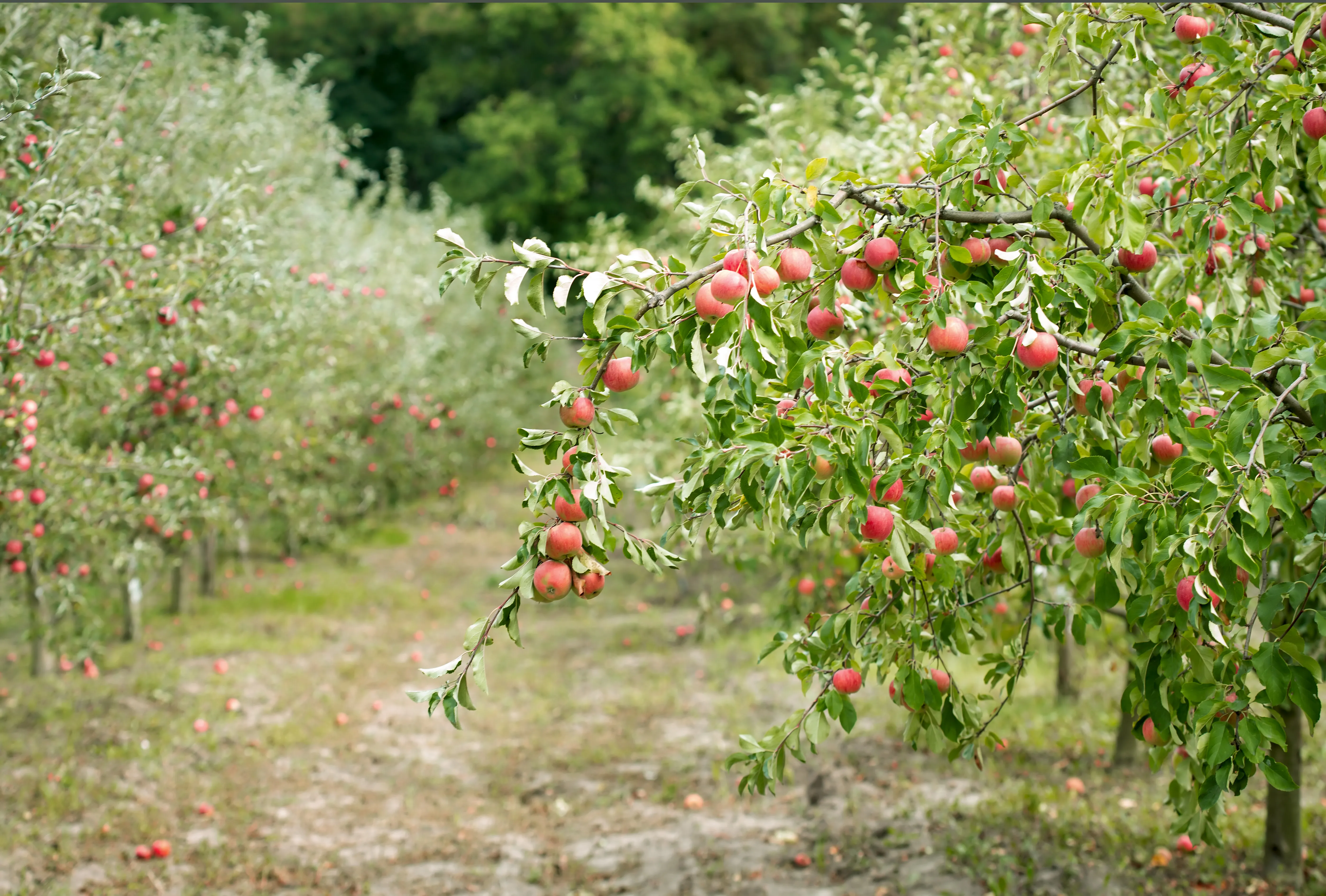Starting an Orchard (Part II)
The previous post began outlining initial steps for implementing an orchard starting with assessing your skills as a grower and getting acquainted with what qualities to look for when selecting a site. With these basics squared away, next steps are to make decisions around design, sourcing, and scale.Design & layout
Fruit trees come in different
sizes as influenced by the rootstock (primary contributor), scion (secondary contributor), and
the grow power of your site (soil, climate, etc.) Based on the size of trees you intend to plant,
calculate tree spacing, both in row and between rows. “There’s no hard and fast literature that
tells you exactly what your row spacing should be,” says Orin Martin, manager of the Alan Chadwick
Garden at UCSC, “just consider what kind of equipment you need to get down the alleys and how dense
of an orchard you’re willing to manage.” Stick to patterns of squares or rectangles to keep the
layout maneuverable, and if possible plant North to South to absorb optimum sunlight.
Sourcing
You can buy trees from a nursery or graft them yourself. Grafting
on your own costs roughly $1 per tree, but it will take 2-3 years of coddling before they're ready
to be planted in the orchard. If you buy them in they can cost as much as $35 per tree depending on
the size of your order. Trees are measured and sold by their caliper
rather than age in years. Orin’s recommendation is to source trees with ½” caliper or more. “You’re
not going to save any money if you go any lower” he advises, due to the extra time it will take for
the whip to grow and take off. Somewhat similarly, sourcing trees larger than ¾” caliper also might
not be a savings based on the “law of diminishing return.” Quality organic trees are difficult to
source, but Trees of Antiquity has a
wide selection. Additional nurseries Orin recommends include Stark
Bothers, Raintree, and Van Well.


Time to plant!
Establish a fertility plan, ideally budgeting around 1-3 years to prep the ground. Cornell offers a
slew of great resources
on nutrient and fertility management for fruit trees. Orin advises sowing a heavy cover crop and
applying compost at 5-10 tons/acre every time you turn the ground over. “You only have one chance to
prepare the soil before you stick a tree in the ground for 50 years, so make sure you do it right.”
You can either plant by hand or with a PTO powered auger. If going the mechanical route, proper soil
moisture is imperative. Should the soil be too wet, you’ll end up with slicks on the sides of the
hole creating a compaction layer that will be extremely difficult for roots to break through.
Other suggestions
Talk to your neighbors, check in with locals (professionals, hobbyists, and ag extension agents)
about what has been grown in your area historically. “Don’t be afraid to experiment, but if you’re
growing on a commercial scale find out what’s reliable and proven satisfactory in your area and
plant that.” Orin recommends starting small, and as you see plantings succeed then continue to
expand. Scale matters. Orin’s opinion on scale and the ability to produce high-quality fruit via
organic practices in a biological way is:
3-5 acres “is do-able”
5-10 acres “probably”
20+ acres “I don’t know!”
With enough planning and preparing, the best time to plant a tree (or many) is now!
If you liked this article, and want to see more like it, enter your email in the subscribe box
to the top-right of this page and we'll send you new blog articles as we publish them.

Jane works as a Field
Production Specialist at the Center for Agroecology and Sustainable Food Systems, where her days
are filled with tractor work, irrigation coordination, orchard care, and educating apprentices
and interns. Her favorite way to end a long day's work in the sun, is running down the hill to
Mitchell's Cove and jumping in the Pacific.